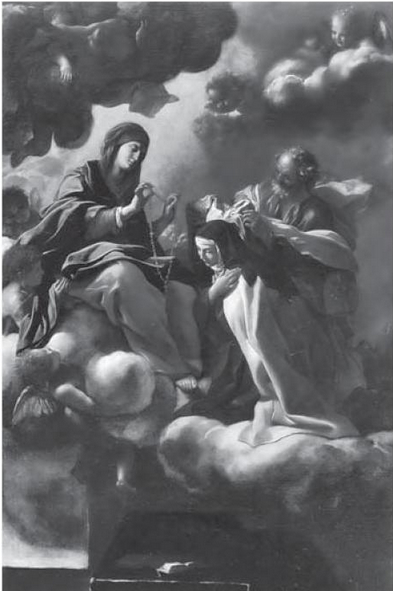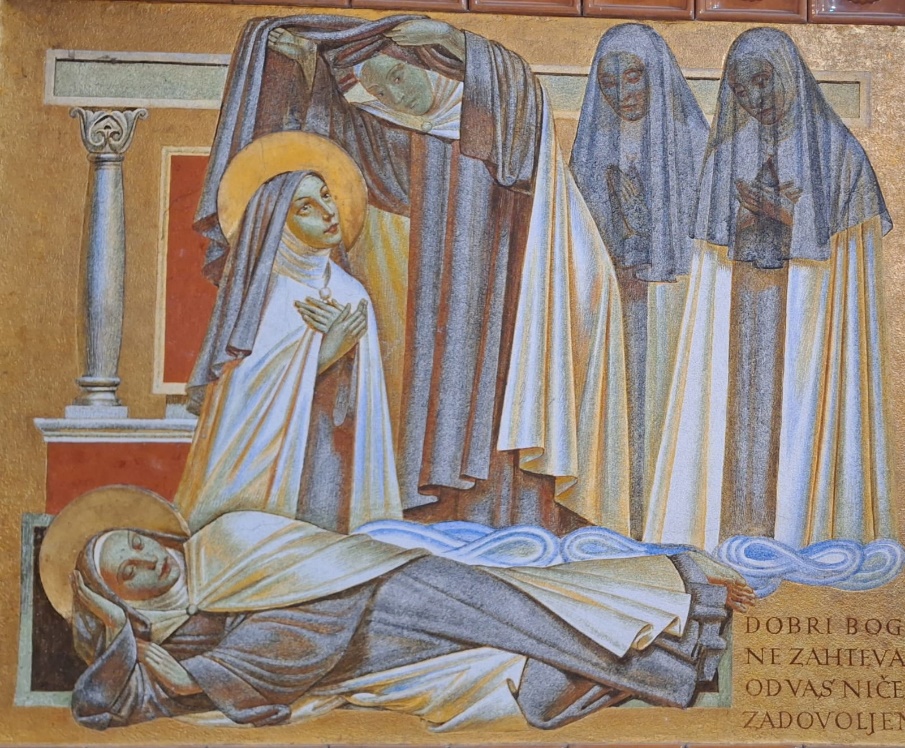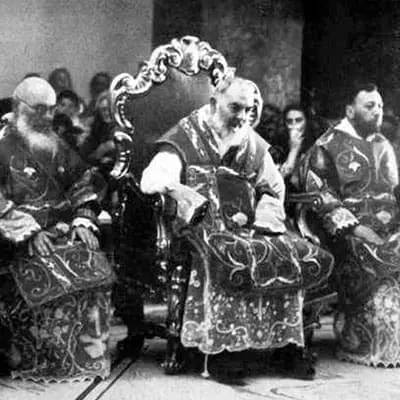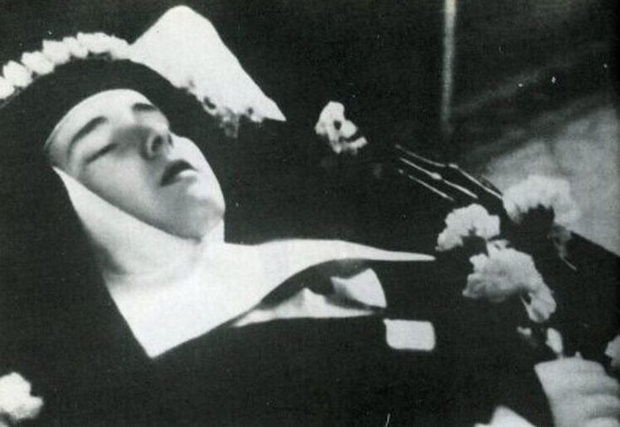Sister Isabel of the Angels: A Hidden Treasure of Spain
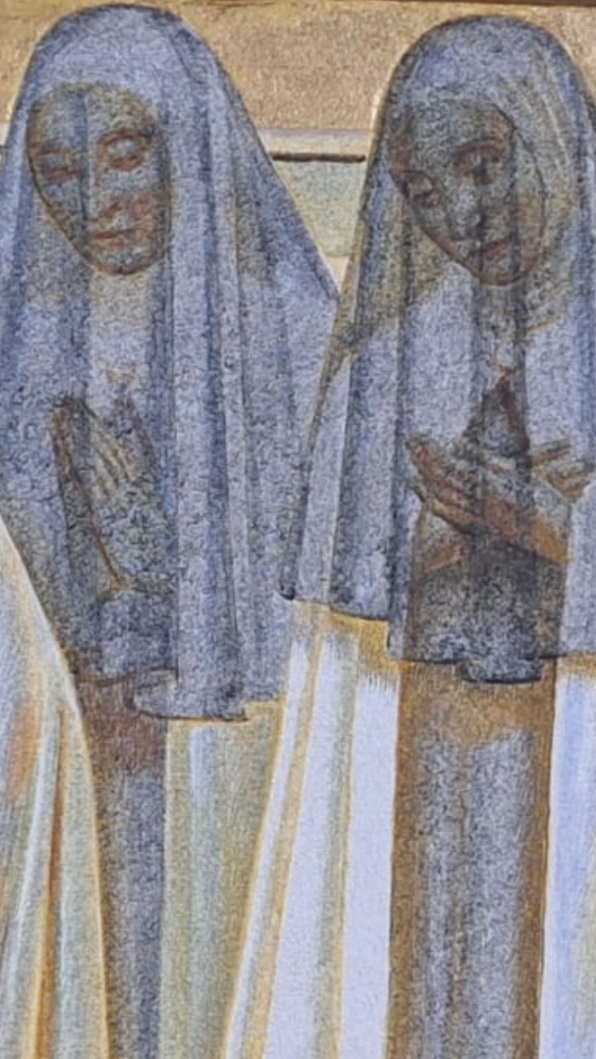 “Anyone who died as she did would be called a saint.”
“Anyone who died as she did would be called a saint.”
– St Teresa of Avila
Birth: ???
Conversion: Corpus Christi, 1568
Entered Carmel: September, 1569
Profession: October 21, 1571
Death: June 11, 1574
Childhood
A native of Medina del Campo, Spain, Isabel Ruiz y Portillo (whose birthday, unfortunately, does not appear to be recorded) was the daughter of Bito Ruiz and Doña Maria del Portillo. Ever joyful, she was also lively, beautiful, intelligent, and pious: strongly inclined to the poor, to the saints, to the Queen of Saints, and to the Saint of Saints.
Due to the early death of her parents, Isabel was entrusted to her uncle, Simón Ruiz Embito (d. 1597), who raised her in Medina del Campo with his wife, Doña María de Montalvo. Simón was a well-known and successful banker in his day. As he and his wife had no children of their own, they agreed to raise Isabel. Towards the end of his life, Simón would devote himself chiefly to the establishment of what is now known as the Hospital de Simón Ruiz. 
Adolescence
In later years, Isabel was described as “rich, beautiful and frivolous” (LST, 54). Although she never appears to have left the path of virtue entirely, it cannot be denied that she was somewhat inclined to vanity, which was to some extent stifling the stirrings of grace. This is no great surprise, considering that her talent and great beauty (more so the latter) made her the object of common praise. Simón had no trouble finding suitors, e.g., a rich and prominent knight from Palencia. Isabel was not interested.
But we are getting ahead of ourselves, for this particular refusal – in which she was encouraged by her maid, a native of Valladolid, who told her not to sacrifice her freedom to pursue God in religion – did not take place until after her “conversion.”
Her Conversion
Isabel’s lasting conversion began on the Feast of Corpus Christi in 1568, somewhere between the birth of St Aloysius Gonzaga, March 9, 1568, and the death of St Stanislaus Kostka, Aug 14, 1568 (interestingly, a Eucharistic miracle took place earlier that year in Alcoy, Spain, which is commemorated yearly on the Feast of Corpus Christi). The catalyst was a sermon which was preached by Padre Bautista, S.J. So moved was she that she told her ever-faithful maid and companion, María de Baraona, that she had to leave. She returned home, shut herself up in a secluded room, and wept profusely. She washed her face, took off her headdress, and cast away her finery. The shackles that had hitherto kept her bound to this earth and to creatures would soon be broken. With the permission of her confessor, she imposed a rigorous discipline on herself that was to last for three quarters of an hour. Her uncle, seeing her bloody and disfigured, gave her a stern rebuke, but his harsh words only brought her joy.
Grace was at work. In almost no time at all, she had brought the flesh under subjection to the spirit, and the spirit under subjection to God. Isabel became deeply prayerful, devoting herself to vigils, penance, and frequent Communion. She spoke of confession often. She yearned for true beauty: that of the soul (cf. Ps. 44:14). Her maid was similarly fervent. The two of them would retire at certain times of the day and night for long periods, giving themselves up to prayer on a platform that overlooked the Church of San Facundo. Isabel would take the discipline and punish herself rigorously in the company of her servant. Such was their united fervour for penitential exercises that, one night, they awoke the household, who mistakenly took them for thieves. Were they relieved to discover that it was only Isabel and María?
Vision of a Discalced Carmelite
During the Octave of Corpus Christi, 1568, Isabel retired to an oratory to pray, accompanied by María de Baraona. They both had a vision of a discalced Carmelite who was praying near the altar. Who was it? He mysteriously vanished from their sight. Isabel also heard an interior voice, which told her that she and her maid were to enter Carmel. She took this as a clear sign that she was to enter the Carmel founded by Madre Teresa of Jesus (St Teresa of Avila).
Later that year, as Madre Teresa was passing by, Isabel met Fr. Antonio de Jesús, who was shortly to begin a foundation of Discalced Carmelite Friars in Durvelo. It was the religious from the aforementioned vision. Isabel and María were now more intent than ever on leaving all things to follow the Lamb.
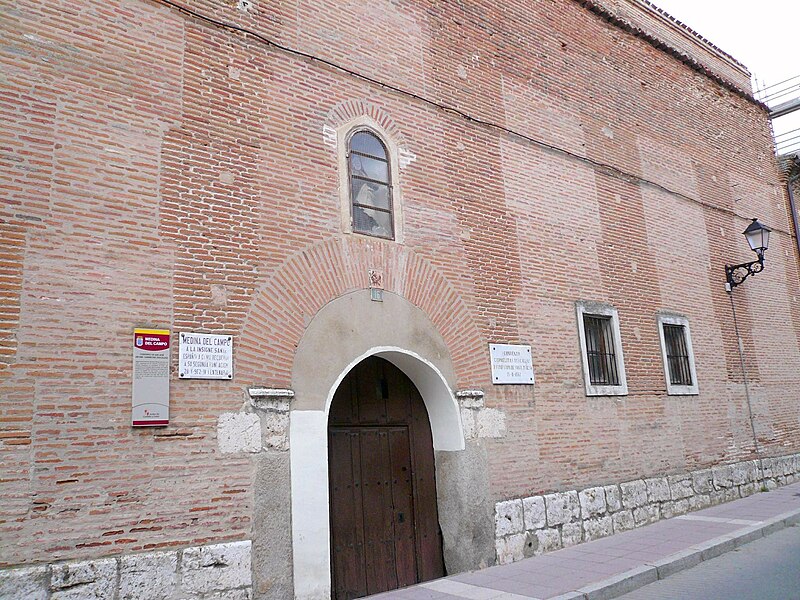
Entering Carmel
Despite her uncle’s attempt to marry her off, Isabel persevered in her resolution, entering the Carmelo de Medina (i.e., the Convento de San José, St Teresa’s second foundation) in September of 1569, a little over two years after the Convent’s foundation on August 15, 1567 (the Feast of the Assumption), and a little less than five years before her holy death. Her new name was to be Isabel de los Angeles (Isabel of the Angels). This is fitting for one who would later be described as “an angel in human flesh” (CGST, 270).
“May Our Lord ever have her in His keeping,” wrote St Teresa to Simón Ruiz on October 19, 1569, “as well as Sister María de San Francisco [the former’s maid], since He already fills them with spiritual joy!” (LST, 54) Given that spiritual joy is both a sign and a fruit of self-sacrificing love, it is evident that Isabel and her companion were off to a good start.
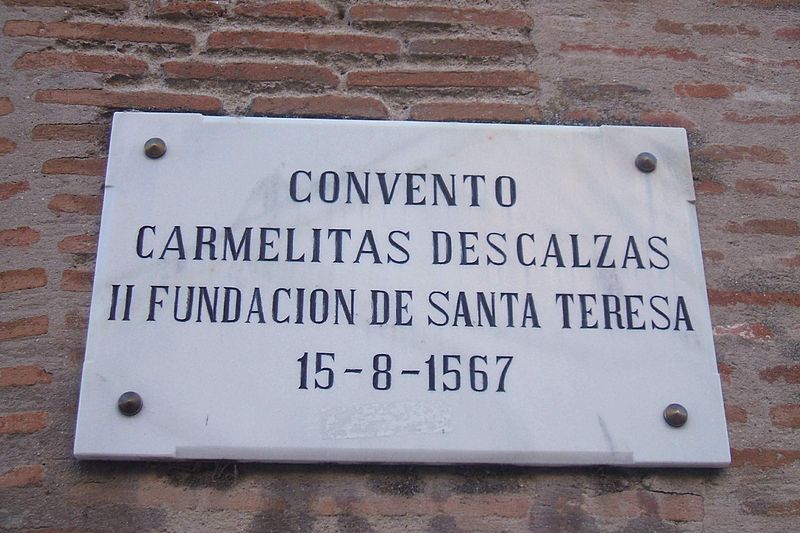
Like Mother, Like Daughter
Isabel, it seems, was not one to do things by halves. Having decided to enter the convent, she was all set to bestow upon the convent her impressive dowry. Her relations, who were already opposed to her vocation, were obviously not too keen on this new development. What did they do? They demanded, in exchange, the patronage of the church, or, according to another account, the patronage of the high altar (LST, 54; Cf. STLT, 456). In any event, the good Madre, St Teresa, obviously wasn’t having any part of it, nor was Sr. Isabel, as is evident from the following brief account: “The Provincial or Visitor (himself a Carmelite), siding with the relatives, took Teresa, who was prioress, and her novice so rudely to task that Isabel de los Angeles, in an impetuous moment of masculine resolution, divesting herself of her scapulary, threw it at his feet with the words, ‘If your paternity is acting in the interests of your habit, behold it before you’.” (STLT, 456) St Teresa must have been proud.

Transfer and Profession
Subsequently, it was determined that Sr. Isabel of the Angels would be transferred to the Carmelite convent in Salamanca. There she would make her profession on October 21, 1571 (less than one year since it was founded by St Teresa on November 1, 1570). It was for this occasion that St Teresa composed the poem, “The Holocaust,” a portion of which contains these words:
“… Obscurity shall be my sight!
Exalted when I’m most abased.
My pathway by the Cross is traced,
Wherein I glory and delight.
… Dishonour weaves my laurel crown;
I strive to win the prize of pain –
The meanest place, that all disdain,
Brings me retirement and renown!”
(MW, 28-29)
This was the second poem that St Teresa had composed for Sr. Isabel of the Angels, the former (Poem 13: “The Wise Virgin”) having been written for the occasion of her veiling/clothing in September, 1569 (MW, 25-27).
“When wilt Thou comfort me?”
“My pathway by the Cross is traced, wherein I glory and delight.” These words constitute an accurate description of Sr. Isabel of the Angels, who, like her Divine Master, did not merely carry her cross, but embraced it. “If sufferings were for sale,” said Mère Marie du Bourg, “I would rush to buy them.” (TIR, 86) One can imagine that Sr. Isabel of the Angels would have appreciated these words.
“Her desire for crosses made her, when reciting the Divine Office, pass hastily over the words, Quando consolaberis me? [“When wilt Thou comfort me?” – Ps. 118:82], lest she should receive consolation instead of trials.” (LST, 54) On one such occasion, having breezed over these words, she was reproved by Anne of Jesus, to whom she replied: “Forgive me, mother, but how should I ask consolations of God when I am conscious I only deserve punishment?” (TLST, 384)
As an aside, how can we not recall that passage from the same psalm, occurring only thirty verses later, which made St Thérèse feel a little uneasy: “I have inclined my heart to do thy justifications for ever, for the reward” (Ps. 118:112) This need not have been the case, for God Himself is ultimately our “reward exceeding great” (Gen. 15:1).
Sickness and Scruples
The fervour of Sr. Isabel of the Angels was such that she excited a holy envy in all. Her humility was profound; she loved the cross; and, in her capacity as one of the nurses of the Community, she served her sick Sisters with admirable patience and charity.
After a little more than two years as a professed Carmelite, Sr. Isabel of the Angels would herself be in need of a nurse. “After eight months in bed the poor woman was not only wasted by pain, but tormented by scruples and other agonies of mind and spirit” (ST, 429). Her sufferings were particularly notable on Friday, June 11, 1574 [in the old Julian calendar], the Feast of St Barnabas. As the Sisters went to choir to hear Mass, Sr. Isabel remained “in a state of great depression” (VA, 50).
The Holy Death Sr. Isabel of the Angels: An Account from Blessed Anne of Jesus
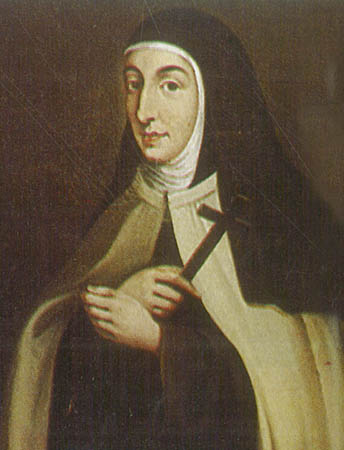
On our return, (writes Blessed Anne of Jesus,) we found her quite changed – an extraordinary joy had succeeded to her trouble of mind. Mother Anne of the Incarnation, our prioress, said to her: ‘Blessed be God, Sister, you seem better. Why are you so full of joy?’
‘Because today, Mother, my sufferings will come to an end,’ she answered, ‘and I shall go to enjoy the good I sigh for.’
Mother sub-prioress then asked her, ‘Who told you that, Sister?’
The invalid replied with a smile: ‘What a question! Somebody told me, and it was somebody who had a right to say it.’
The Mothers withdrew, and I, being her Mistress of Novices, remained alone with her. I said: ‘How is it you are so sure your exile will be ended today?’
Then she confided to me that during Mass our blessed Mother Teresa had come to visit her and console her, and giving her a blessing had said, while taking her face in her two hands: ‘My child, do not be so foolish as to stop at all these scruples. Have, rather, a great trust in all that your Divine Spouse has done for you. God has great glory in store for you. Believe that even this very day you will enjoy it’. (VA, 51; Cf. TLST, 393 – 394, (emphasis added).
Blessed Anne of Jesus proceeds to tell us of that intense peace and joy that filled Sr. Isabel of the Angels, such that her fears seemed never to have existed. The time for Matins came and two Sisters remained with the dying nun. As 11:00 pm approached, all of the Sisters, “moved by an irresistible impulse, hastened to the infirmary” (VA, 51). They began to invoke the Holy Name of Jesus and to say the Credo. Meanwhile, the dying Sister recited the Credo in Spanish, while holding a blessed candle and crucifix. Having barely finished her prayer, “she sweetly expired. At the same moment, her body radiated a heavenly beauty and supernatural splendour” (VA, 51, emphasis added). This phenomenon lasted until she was buried, and was witnessed by many, including the significant number who were present at the requiem. So many were present that it was necessary for the Count of Fuentes and Commander Paez to stand guard around her body.
After Death: High Praise from a Future Doctor of the Church
Madre Teresa praised Sr. Isabel of the Angels profusely after her death. “Anyone who died as she did,” wrote Madre Teresa to Mother Mary Baptist, Prioress of Valladolid, “would be called a saint. She certainly went to God, and I, a useless creature, remain on earth” (LST, 154-155).
Saint Teresa Was Present at the Bedside of the Dying Nun
Isabel de los Angeles, at Salamanca, told the nuns that St Teresa, who was then at Segovia, had appeared and consoled her on her death-bed. This was confirmed by the nuns at Segovia who said that the holy Mother had been in so deep a trance at the time as to appear dead. She owned afterwards that she had been present at Salamanca in spirit, and that while praying for Isabel de los Angeles immediately after her death, Our Lord had said to her, ‘She is already with Me’. (LST, 154, emphasis added).
Sister Isabel and Saint Dositheus
Blessed Anne of Jesus adds this interesting and edifying detail: “I asked her [Madre Teresa] again if she had told Sr. Isabel that God had great glory in store for her in Heaven. ‘Yes,’ she answered, ‘for His Divine Majesty showed me that this Sister had merited as much during the five years of her religious life as many others do in fifty years of strict observance’.” (VA, 52, emphasis added)
A certain Fr. Rodriguez relates a similar story about Dositheus, the disciple of St Dorothea. After the death of the former, it was revealed (apparently to the latter) that after five years of docile obedience, Dositheus merited the reward of St Paul the Hermit and of St Anthony the Abbot! This is even more impressive – and consoling – when we consider that this young disciple was, through infirmity, unable to practise the austerities of his fellow monks (AW, vol. XVII, 116).
A Vision of Sr. Isabel’s Passage to Glory
At the same hour that Sr. Isabel of the Angels died, Sr. María de San Francisco – who was in the convent at Medina, where she was professed – saw her crowned with great glory. In her vision, she beheld Sr. Isabel of the Angels with a palm in her hand and a crown of flowers on her head. She was accompanied by angels, who held her shoulders. Her body was luminous, transparent, with an ethereal quality that Sr. María de San Francisco likened to mother-of-pearl. Jesus told this Sister that the great glory in store for Sr. Isabel of the Angels was due principally to her care for the sick and for her patience in enduring scruples and interior trials.
Blessed Anne of Jesus and Two Unknown Carmelites Visit Saint Thérèse
On May 10, 1896, St Thérèse behold Blessed Anne of Jesus and two other Carmelites in a dream. Here follows an abridged version of St Thérèse’s account:
And in the midst of the storm,” writes St Thérèse, “I fell asleep. The following day, May 10, just at dawn, I dreamt that I was walking in a gallery alone with Our Mother. Suddenly, without knowing how they had entered, I perceived three Carmelites, in mantles and long veils, and I knew that they came from Heaven.
… I saw the tallest of the three Saints advance towards me… At once I recognised our Venerable Mother, Anne of Jesus, foundress of the Carmel in France… She caressed me tenderly, and seeing myself the object of such affection, I made bold to say:
‘Dear Mother, I entreat you, tell me, will Our Lord leave me much longer in this world? Will He not soon come to fetch me?’
She smiled sweetly, and answered, ‘Yes, soon… very soon… I promise you.’
‘Dear Mother,’ I asked again, ‘tell me if He does not want more from me than these poor little acts and desires that I offer Him. Is He pleased with me?’
… ‘The Good God asks no more of you,’ she said, ‘He is pleased, quite pleased,’ and, taking my head between her hands, she kissed me so tenderly that it would be impossible to describe the joy I felt… My happiness was too great for words… (LFJ, 179-180, emphasis added)
Did Sr. Isabel of the Angels Visit Saint Thérèse?
Like St Thérèse, Sr. Isabel of the Angels, being “made perfect in a short space… fulfilled a long time” (Wis. 4:13). Could it be that the latter – whose name is probably the Spanish equivalent of Elizabeth, which can mean in Hebrew: “God is perfection” – was one of the two Carmelites accompanying Blessed Anne of Jesus in St Thérèse’s beautiful and prophetic dream of May 10, 1896? She was, after all, one of Blessed Anne of Jesus’ novices – and a very fervent one at that! Who better to accompany her? In any event, Sr. Isabel of the Angels and St. Thérèse are certainly well-acquainted now.
A Powerful Intercessor in Heaven
From her high place in Heaven, Sr. Isabel of the Angels can help us to love God as she did – or, better still, as she does; for, as St Bonaventure says: “One beholder loves God more than a thousand wayfarers” (MMA, 303). She can help us to surrender to the living flames of Infinite Love burning in the Sacred Heart of Jesus, to Which the world was consecrated by Pope Leo XIII on June 11, 1899, the 325th anniversary of Sr. Isabel’s death. It was on this same date, four years earlier – i.e., on June 11, 1895 – that St Thérèse, alongside her sister, Céline, consecrated herself to Merciful Love, thus consolidating her spontaneous oblation from two days previously.
Ever a Faithful Nurse
For those looking for a faithful friend: turn to Sr. Isabel of the Angels; she will accompany you. To those suffering from sickness, interior trials, scruples: Behold your nurse! To religious – especially Carmelites – who are aspiring to perfection: Ask Sr. Isabel of the Angels for a double portion of her spirit (4 Kg. 2:9).
If you offer so much as one Communion in her honour (an easy way to increase the “accidental” joy and glory of the Saints, as St Gertrude and others testify), you can be sure that you will have a faithful friend forever!
Sr. Isabel of the Angels, Consoler of the Sacred Heart of Jesus, pray for us!
Bibliography
AW, vol. XVII: St. Alphonsus Liguori, The Complete Works of St. Alphonsus de Liguori: The Ascetical Works, vol. XVII: Miscellany, Edited by Rev. Eugene Grimm, C.Ss.R. (Benziger Brothers: New York, Cincinnati, Chicago, 1890)
CGST: St. Teresa of Avila, Cartas de la Gloriosa Santa Teresa de Jesús, Tomo IV (Printers of Don Joseph Doblado: Madrid, 1793)
LGC: R. P. François de Sainte Marie, O.C.D., L’Histoire Generale des Carmes Déchaussez et des Carmélites, Second Partie, Traduite en François par le R. P. Gabriel de la Croix (Gilles Blaizot: Paris, 1666), 155-163.
LST: St. Teresa of Avila, The Letters of St. Teresa, vol. I, Translated by the Benedictines of Stanbrook (Benziger Brothers, 1926)
MMA: Juan Maria Lozano, C.M.F., Mystic and Man of Action: Saint Anthony Mary Claret; A Study in the Development of His Spiritual Experience and Doctrine, Translated by Joseph Daries, C.M.F. (Claretian Publications: Chicago, 1977)
MW: St. Teresa of Avila, Minor Works of St. Teresa; Conceptions of the Love of God: Exclamations, Maxims and Poems, Translated by the Benedictine Nuns of Stanbrook (Thomas Baker: London, 1913)
RD: Padre Fray Francisco de Santa Maria, Reforma de los Descalços de Nuestra Señora del Carmen (Madrid, 1644), 494-497.
ST: William Thomas Walsh, St. Teresa of Avila: A Biography (Bruce Publishing Company: Milwaukee, 1943)
STLT: Gabriela Cunninghame Green, Santa Teresa: Being Some Account of Her Life and Times, vol. I (Adam and Charles Black: London, 1894)
TIR: Raoul Plus, S.J., The Ideal of Reparation, Translated by Madame Cecilia (Burns, Oates & Washbourne, Ltd.: London, 1921)
TLST: A Carmelite Nun, The Life of Saint Teresa, Translated by Alice Lady Lovat (B. Herder: St. Louis, MO, 1912)
VA: A Sister of Notre Dame de Namur, Life of the Venerable Anne of Jesus, Companion of St. Teresa of Avila (Sands & Co.: London, 1932)

